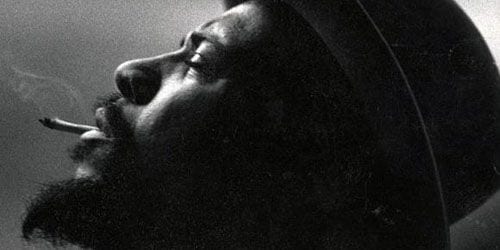
Thelonious Monk was truly one of the most expressionistic musicians to ever live. Actually, to reduce the piano great to a mere musician is a bit insulting. He was more than that. Monk was a painter. He was a virtuoso. He was a master. He was an artist in the truest sense of the word. He was a giant. He was imaginative. He was fearless. He was an inventor.
Largely credited for the creation of be-bop, Monk laid the groundwork for modern-day jazz. He continuously fought to keep things outside the box, always looking forward and seemingly never questioning himself no matter what repercussions may lie ahead. Listening to him play is like listening to a man pouring out his soul in the most Shakespearean way. Even without words, his piano mastery immediately transfixes all listeners and guides them through an emotional journey that could be ruined only by other sounds.
That’s why Thelonious Alone in San Francisco, the second of three albums filled with nothing but solo piano music that Monk released in his career, continues to set the standard for jazz performance today. Sure, any fan of the genre can already tell you how influential the release was when originally recorded in 1959. But with Concord Music’s Original Jazz Classics series’ recent reissue, we are all reminded once again of the legend’s impact on an entire movement of music.
The only extra offering we receive here is a second take on “There’s Danger in Your Eyes, Cherie”, one of the standout tracks from the original album’s set. The difference between the two performances is minimal yet noted. Whereas the originally released recording sees Monk abundantly use accents and aggression, this previously unreleased version is more delicate. The legend’s signature pauses and punches are still there, though with this alternate take, everything seems more subdued, as though Monk consciously recorded one version filled with fire and another with tears. The difference in approach doesn’t take a thing away from the initial sterling composition, though, and the newly released version proves to merely be yet another example of how intelligent Monk’s music can appear.
The other tracks on Thelonious Alone in San Francisco also prove to have aged with grace, now more than 50 years removed from when they were initially realized. The album has always contained one of the most riveting renditions of “Blue Monk” ever recorded, and hearing it lead the album is again a reminder of the uniquely brilliant mind that sat inside Monk’s head. Even more so, the expertise within the intricacies of the pianist’s playing prove to be best suited for this setting, without the aid of other instruments. This particular performance is the best way to take in all of what Monk intended when originally penning the piece.
“Everything Happens to Me” allows Monk to play with tempos and time signatures as breathlessly and breezily as anyone who has ever sat behind a piano. “Round Lights” and “You Took the Words Right Out of My Heart” are two exhilarating adventures through music and mind, proof that Monk never needed to utter a word to convey the emotions with which he seemed to be constantly wrestling. Tracks such as “Ruby, My Dear”, “Reflections” and “Bluehawk” continue to bleed as much genius today as they did when the icon first laid the songs down half a century ago.
Some people argue that Thelonious Alone in San Francisco is the best record Thelonious Monk ever produced. It’s a portrait of relaxation — a peak into what it might be like to simply sit around and watch a master work by himself with only his craft. There are also those who believe that Thelonious Alone in San Francisco is one of the greatest jazz music recordings ever because of its detailed journey into such an unparalleled musical mind and because that voyage is set in such a raw atmosphere that the element of intimacy becomes palpable with each listen.
Wherever Thelonious Alone in San Francisco ultimately winds up in the history of musical legend is seemingly irrelevant at this point. More than anything else, this album is a lesson in composition. It’s a lesson in craftsmanship and it’s a lesson in language. Monk was talking to himself throughout all of Thelonious Alone in San Francisco. Little did he know, though, that those thoughts would translate into something as beautiful, interesting, masterful and inspiring as the songs that appear on this masterpiece of a record. It’s a conversation we all long for when interacting with others. As Thelonious Alone in San Francisco proves, it’s a conversation this legend had no problem igniting whenever he happened to find himself alone with a piano.
